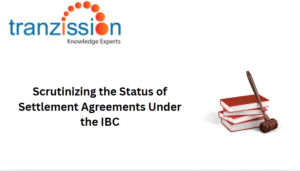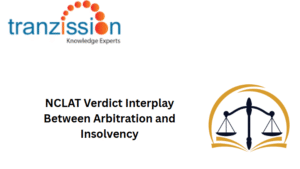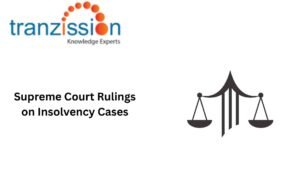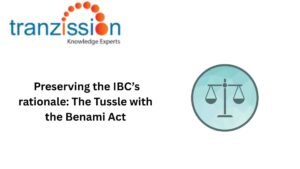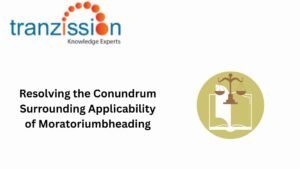
Impact of Sustainability on Business Recovery

Table of Contents
Nowadays businesses must be more mindful of the impact they have on the environment, society, and the economy. The concept of ‘Sustainability on Business Recovery’ is not limited to reporting compliance, but also extends to the resilience of the business. Hence, businesses that prioritise sustainability can enhance its reputation and build trust with customers, employees, and potential investors.
Understanding Sustainability in the Context of Business Recovery
Sustainability in recovery goes beyond simply restoring infrastructure and operations in their previous state. It is important to understand:
What is Sustainability?
In the context of business recovery, sustainability focuses on integrating environmental, social, and economic considerations into the recovery process to ensure long-term resilience and positive impact, rather than just restoring pre-crisis conditions. For instance, environmentally friendly materials and construction techniques can be used in rebuilding infrastructure.
Sustainability as a Driver of Recovery:
Sustainability can be a powerful driver of business recovery by attracting customers and talent, improving operational efficiency, and fostering resilience in the face of disruptions. Post-pandemic recovery strategies have reflected the importance of integrating sustainability as a tool for risk mitigation and competitive advantage.
Read more : Role of IBC in SME Restructuring
Key Ways Sustainability Supports Business Recovery
There are several ways for businesses to implement sustainability during their recovery, such as:
Strengthening Business Continuity:
Sustainable practices can improve business continuity by reducing dependence on non-renewable resources and diversifying supply chains to mitigate disruptions. Businesses can utilize renewable energy to ensure cost stability. By aligning with consumer preferences and demonstrating a commitment to sustainability, businesses can also potentially increase revenue and market share.
Enhancing Stakeholder Confidence:
Stakeholders, particularly customers, prioritize sustainability, and businesses that embrace it can attract a wider base and build strong brand loyalty. Hence, how sustainability builds trust among stakeholders, including customers, employees, investors, and regulators. This also involves environmental, social, and governance (ESG) reporting and transparency to attract investments during the recovery phases.
Driving Innovation and Efficiency:
Sustainable practices, like adopting green technologies and circular economy models, are powerful drivers of innovation, fostering advancements in areas like renewable energy, resource efficiency, and waste reduction. Through energy efficiency and waste reduction, businesses can significantly reduce costs, thus, leading to lower utility bills, reduced waste disposal costs, and improved operational efficiency.
Aligning with Global Trends and Regulations:
Integrating sustainability prepares businesses for compliance with global sustainability standards and regulatory changes. Companies, regardless of which sector they operate in, need to also focus on sustainability by governments and organizations like the United Nations (UN) and the European Union (EU).
Challenges in Implementing Sustainability During Recovery
Despite the options available to them, businesses may find obstacles, like:
Financial Constraints:
During recovery, the focus of businesses often shift from long-term sustainability goals to fulfilling immediate needs. The limited financial resources during recovery phases can slow down sustainability initiatives. Thereby, businesses need to establish incentives, such as green financing, to overcome these constraints.
Balancing Short-Term and Long-Term Goals:
Sustainable projects often require upfront investment, which can be difficult to secure when resources arealready stretched during recovery. The conflict between immediate recovery needs and the long-term benefits of sustainability initiatives often hinder sustainability of the business.
Lack of Expertise and Resources:
Implementing sustainable practices often requires specialized knowledge and skills, which may be lacking in some areas. Tracking the progress of sustainability initiatives requires robust data collection and monitoring systems, which can be difficult to establish. Businesses, thus, face several challenges businesses face in understanding, implementing, and measuring sustainability practices effectively.
Resistance to Change:
Businesses can face resistance from stakeholders or leadership, which can delay sustainability integration. This can be resolved through fostering a culture of change, involving employees in the process, demonstrating the business case for sustainability, and providing clear communication and support.
Global Case Studies: Sustainability in Action
Several businesses have integrated sustainability into their Impact of Sustainability on Business Recovery strategies. Salesforce has made sustainability a core company value, committing to net-zero residual emissions and transitioning to 100% renewable energy for their operations. Tesla is a leader in sustainable transportation, producing electric cars, that are powered by renewable energy sources, reducing reliance on fossil fuels. In India, Unilever uses sustainable ingredients, such as ethically sourced palm oil to mitigate their environmental impact.
Recommendations for Integrating Sustainability into Business Recovery
To integrate Impact of Sustainability on Business Recovery there are many ways to do so:
- It is recommended for businesses to evaluate their own current practices, supply chain dependencies, and carbon footprint as a baseline for sustainability initiatives.
- It is recommended to embed sustainability into the organization’s core recovery plans and KPIs and discuss frameworks like ESG reporting to monitor progress.
- It is recommended to implement active engagement with employees, customers, and investors to ensure buy-in and alignment with sustainability objectives.
- It is advised for businesses to explore financing options such as green bonds, sustainability-linked loans, and government incentives.
- Businesses are recommended to create a sustainable supply chain, such as diversifying suppliers, reducing waste, and sourcing locally.
The Future of Sustainability in Business Recovery
Businesses that proactively integrate sustainability today will gain a competitive edge in future crises by enhancing resilience, attracting environmentally conscious stakeholders, and driving innovation, ultimately leading to long-term value creation and improved brand reputation. To integrate Impact of Sustainability on Business Recovery or insolvency, businesses need primarily introduce a new agenda. This should include areas where sustainability issues have converged with business issues, and where new topics have emerged, it should allow for the reinvention of sustainability to meet the needs. For instance, as investors are focused ESG factors, and businesses with strong sustainability practices are likely to attract investment and maintain a positive market valuation. Thus, businesses are needed to adapt emergy trends such as net-zero commitments, circular economies, and carbon-neutral business models.
Conclusion : Impact of Sustainability on Business Recovery
In conclusion, fostering business resilience with sustainability is an investment that pays off in the long run. Businesses that adopt sustainable practices are not only better equipped to handle economic uncertainty, but they also create a more stable, secure, and sustainable future for everyone. By taking steps to reduce waste, conserve resources, and promote sustainable business practices, they can improve their bottom line and make a positive impact on the environment and the communities they serve. Thus, sustainability has an important role in supporting Impact of Sustainability on Business Recovery by fostering resilience, innovation, and stakeholder confidence and addressing challenges such as financial constraints and resistance to change.

